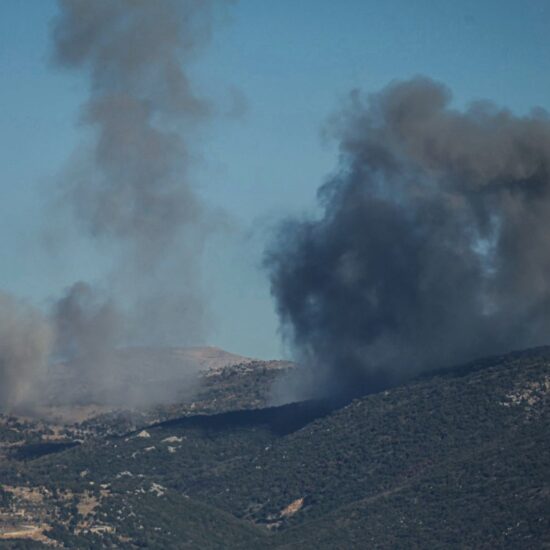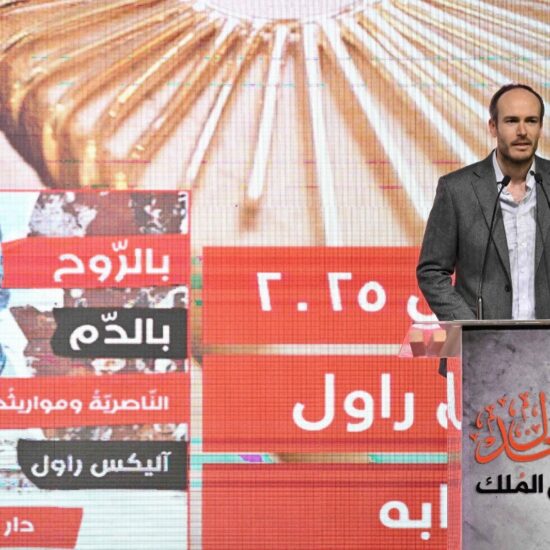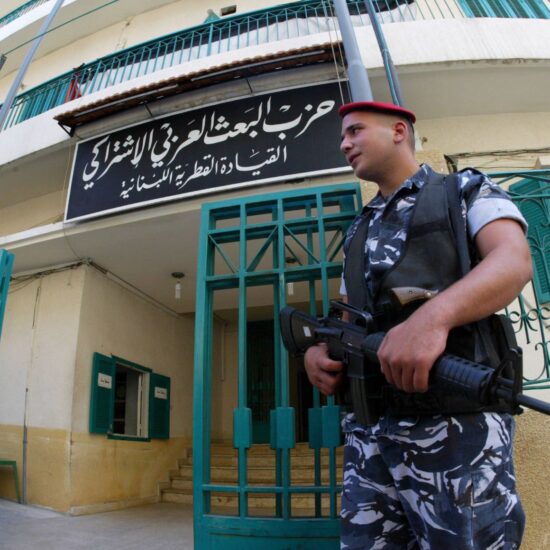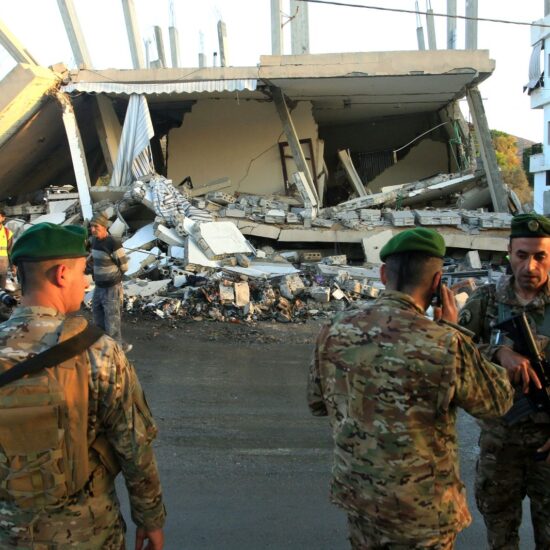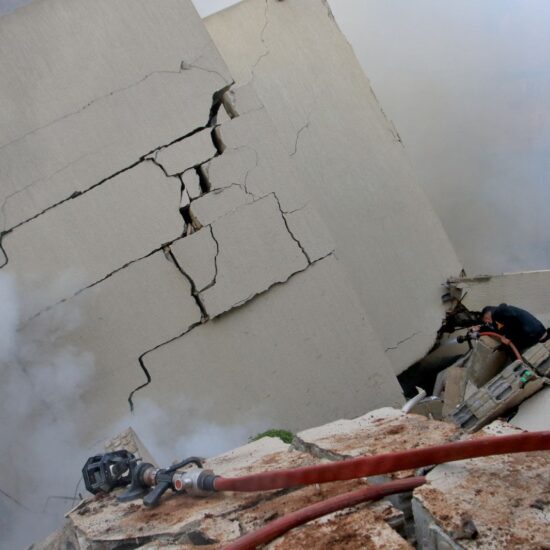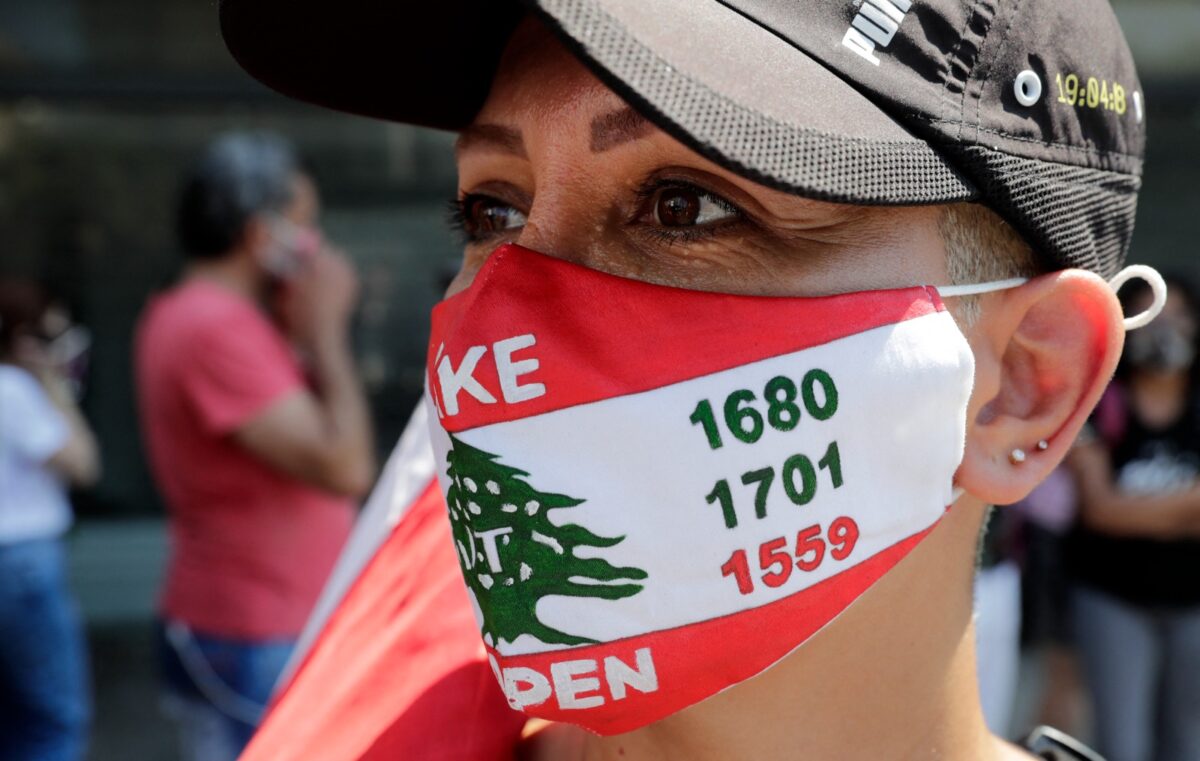
Amidst the unprecedented urgency of yet another crisis for Lebanon, a new path toward stability and sovereignty can be traced
Lebanon is facing one of the most volatile and uncertain periods in its modern history, grappling with a perfect storm of internal political paralysis, economic collapse, and now, all-out war with Israel. The conflict, which has escalated in recent months, has further compounded an already dire situation, leaving Lebanon in a state of chaos and deepening instability.
Amid this turmoil, the Lebanese people are bearing the brunt of the crisis. The prolonged political deadlock has left the country without a functioning president or government, while the Lebanese economy continues its dramatic freefall, plunging large segments of the population into extreme poverty. Making matters worse, hundreds of thousands of internally displaced persons (IDPs) – particularly from southern regions and areas hardest hit by the war – are now living in dire conditions. These families, displaced by conflict, are struggling to survive with little to no state support.
The situation of the IDPs is a stark testament to Lebanon’s inability to resolve both its internal governance failures and external security threats. Displaced families are crammed into overcrowded and unsafe shelters, often relying on international aid and charity to meet even their most basic needs. This escalating humanitarian crisis only underscores the urgency for a long-term solution to Lebanon’s security challenges.
At the core of these challenges lies Lebanon’s unresolved conflict with Israel. The absence of a formal peace like agreement, even a cold one, and the continued presence of powerful non-state actors like Hezbollah have kept Lebanon trapped in a cycle of war, tension, and instability.
However, there is a potential path forward – one that could secure the border, restore Lebanon’s sovereignty, and allow IDPs and all citizens to live in peace. Lebanon must move beyond temporary ceasefires and fragmented truces, and instead commit to a comprehensive, lasting solution that addresses both internal and external conflicts.
An international conference leading to a treaty
The first step is convening an international conference, one that ultimately results in an internationally recognized treaty. This would not only involve Lebanon and Israel but also key international actors such as the United Nations, the United States, European Union, and regional powers. The purpose of this conference would be to address security concerns, commit to territorial integrity, and create mechanisms for lasting peace.
The primary goal of this treaty would be to guarantee that Lebanon and Israel will no longer pose threats to one another. This mutual non-aggression pact would be backed by the international community, which would serve as guarantors of the agreement. By formalizing these commitments in a treaty, Lebanon and Israel would take a crucial step toward reducing hostilities.
Lebanon’s commitment to peace and defense
As part of this treaty, Lebanon would make a binding commitment to not engage in offensive military operations against Israel. In exchange, the international community would provide Lebanon with advanced deterrence weapons, equipping the Lebanese Army to defend the country’s borders and sovereignty effectively. These weapons would serve as a deterrent, ensuring that Lebanon is able to protect itself without the need for non-state actors to fill the security vacuum.
The Lebanese state would pledge to use these weapons solely for defensive purposes, guaranteeing that they will only be deployed in response to attacks on Lebanese soil. This commitment would shift the balance of power in the region, allowing Lebanon to secure its borders while reducing the need for other groups to claim the role of protector.
The end of non-state actors as a security force
The key to this agreement’s success lies in Lebanon’s internal commitment to its sovereignty. As part of this treaty, Lebanon would adopt a clear stance that any group operating outside the state’s control will be treated as a traitor to the state.
Under this new framework, Hezbollah would be required to hand over its weapons to the Lebanese Army, dismantling its military wing in exchange for the state’s enhanced defensive capabilities. This process would be followed by an internal dialogue to address Lebanon’s broader political and sectarian divisions, leading to a new social contract that redefines the relationship between the state and its citizens.
Israel’s commitment to non-aggression and border demarcation
In return, Israel must commit to a permanent non-aggression stance toward Lebanon. This commitment would include the final demarcation of the Lebanese Israeli border, settling any disputes over territory, such as the Shebaa Farms area. Moreover, Israel would have to acknowledge Lebanon’s territorial integrity and halt any expansionist plans, making it illegal for any organizations or individuals within Israel to call for territorial expansion into southern Lebanon.
This part of the treaty would remove a long-standing source of tension between the two parties, allowing them both to focus on their own internal challenges rather than external conflicts. Israel’s commitment to peaceful borders would give Lebanon the security it needs to stabilize and grow, while also reducing the risk of future escalations.
The Palestinian question and Lebanon’s role
Lebanon has long supported the Palestinian cause, and this treaty would not diminish that support. However, Lebanon’s commitment to this new roadmap would involve a shift in its approach to the conflict. While continuing to recognize the Palestinian right to statehood, Lebanon would make it clear that it will not engage in military actions beyond its borders. This stance would help Lebanon focus on its own stability and security, while still advocating for Palestinian rights diplomatically on the international stage.
A temporary ceasefire and diplomatic transition
For this plan to succeed, a temporary ceasefire is essential. This would create the space for Lebanon to elect a president and form a new government capable of engaging diplomatically on these issues. A stable and representative Lebanese government is crucial for negotiating the details of the treaty and ensuring its implementation.
During this ceasefire, Israel would also commit to halting any expansionist policies, allowing both to focus on diplomacy rather than conflict. Once Lebanon has a functioning government in place, the parties would meet—albeit indirectly—through the international community to finalize a permanent ceasefire and begin implementing the treaty.
The path to a permanent ceasefire
This roadmap offers Lebanon a way to secure its borders, strengthen its army, and reclaim its sovereignty. By committing to peace and defense, rather than relying on non-state actors, Lebanon can finally begin to address its internal divisions and rebuild its state institutions. At the same time, Israel’s commitment to non-aggression and territorial respect would lay the groundwork for long-term stability in the region.
This treaty would remove the threat of armed conflict and provide a framework for dismantling the parallel state structures that have hindered Lebanon’s development for many decades. A new social contract, forged through dialogue, could create a more unified, secure, and prosperous Lebanon.
The time has come for Lebanon to move beyond the cycle of violence and instability. With international support and a commitment to sovereignty, Lebanon can chart a new course – one that strengthens the state, protects its people, and builds a future of peace.
Ramzi Abou Ismail is a political psychologist and researcher at the University of Kent.
The views in this story reflect those of the author alone and do not necessarily reflect the beliefs of NOW.



